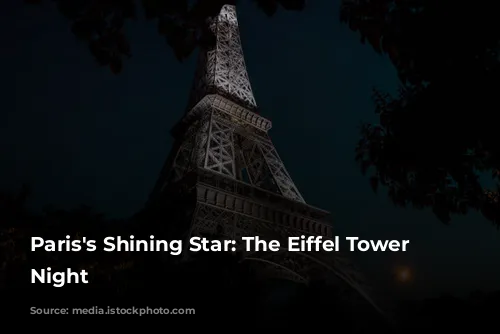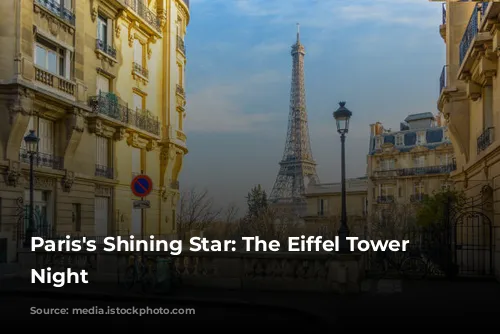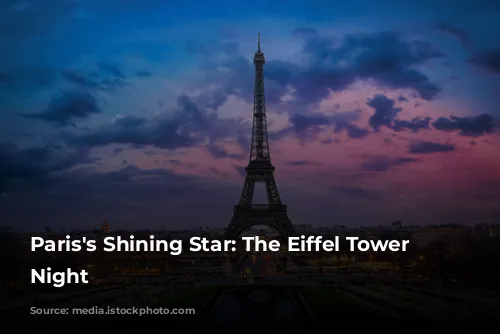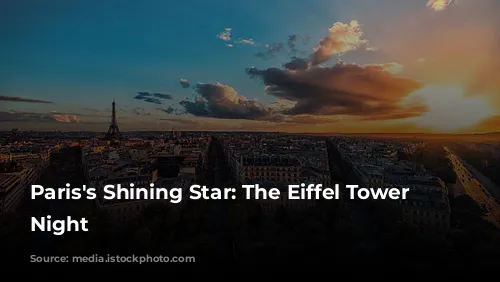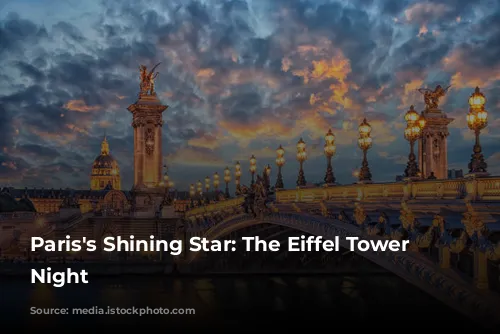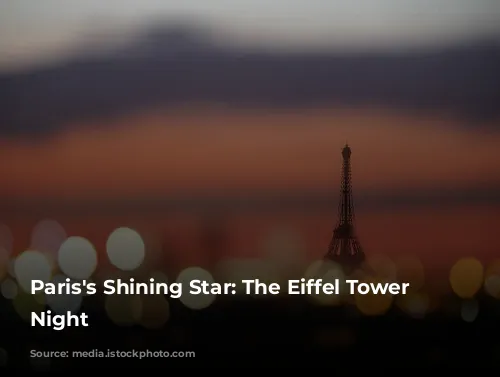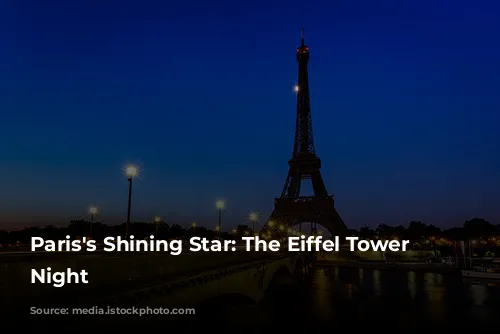As the sun dips below the horizon in Paris, the city transforms into a sparkling spectacle. Iconic landmarks and bustling streets illuminate, captivating Parisians and tourists alike. But when twilight descends, one monument steals the show and captures the hearts of all – the Eiffel Tower. Let’s delve into the enchanting world of the Iron Lady after dark.
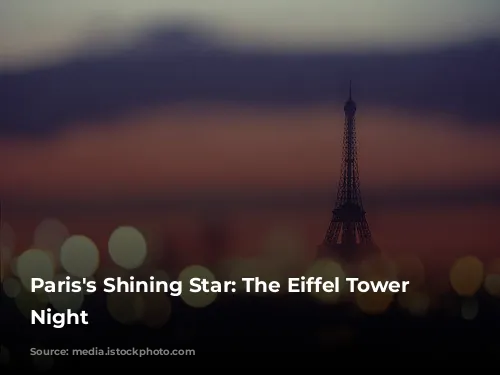
The Eiffel Tower’s Dazzling Lights
Ever since its construction for the 1889 World’s Fair, the Eiffel Tower has boasted mesmerizing illuminations. Today, its nighttime presence is a breathtaking sight.
From Gaslight to Electric Brilliance
In its early days, the Eiffel Tower was bathed in the glow of external gas-powered projectors. During its grand unveiling, over 10,000 gas burners illuminated the Iron Lady, creating a dazzling spectacle.
A decade later, gas was replaced with electricity, and over 5,000 bulbs were integrated into the metal structure, eliminating the need for external lighting. This innovation aimed to enhance nighttime access to the Eiffel Tower while highlighting its elegant form. Since then, various lighting schemes have been temporarily implemented for special events.
A Golden Dress and Sparkling Touches
On New Year’s Eve 1985, the Iron Lady donned a golden dress, coinciding with a significant restoration project that included upgrading its lighting. In 2000, as the new millennium dawned, the iconic lighthouse and the sparkling lights were unveiled to the world. This captivating display, initially intended as a temporary feature, quickly became a permanent highlight of Paris’s evening skyline.
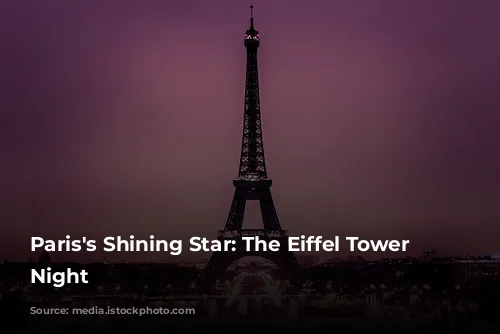
Experiencing the Eiffel Tower’s Nighttime Magic
There’s nothing quite as enchanting as gazing at the illuminated and sparkling Eiffel Tower in Paris. To make the most of this mesmerizing experience, let’s explore the details:
Illumination Schedule
The golden lighting activates with the onset of twilight, thanks to light sensors. Every hour, the Eiffel Tower sparkles for five minutes, starting at the top of the hour. So, if the sun sets at 8:20 p.m., the tower will be bathed in golden light within the following 10 minutes, with the first sparkle occurring at 9 p.m.
The Eiffel Tower lighthouse illuminates and begins its rotation simultaneously with the main lighting at nightfall.
As part of the City of Paris’s energy conservation efforts, all lights on the Eiffel Tower turn off at 11:45 p.m., with the final sparkle occurring at 11 p.m.
During summer, the Eiffel Tower remains open until 12:45 a.m., with the lighting and lighthouse switching off at 1 a.m., leaving only the last sparkle twinkling for five minutes.
Energy Efficiency: A Shining Example
The energy consumption of the Eiffel Tower’s lighting has been a significant concern for several years. In 2004, the electrical power of the 336 projectors was reduced by 40%, accounting for 4% of the monument’s total energy consumption.
In 2008, to reduce the tower’s environmental footprint, the duration of the sparkle was decreased from 10 to 5 minutes. While the 20,000 xenon bulbs used for the sparkle consume very little energy, accounting for only 0.4% of the tower’s energy costs, these figures have further decreased thanks to energy conservation initiatives, with nighttime sparkles now concluding at 11 p.m.
Since 2016, the Eiffel Tower’s lighting has consistently improved its energy performance, with an average annual reduction in energy consumption of 9%.
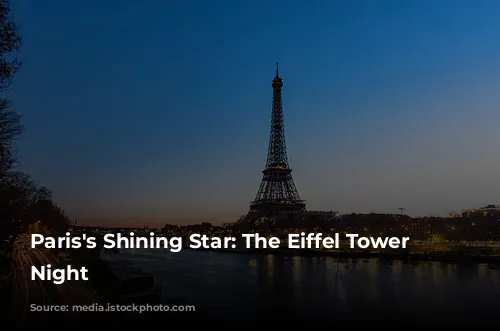
A Beacon of History and Light
Ever since its inauguration in 1889, the Eiffel Tower has featured a lighthouse at its peak, initially designed to illuminate key Parisian landmarks such as the Arc de Triomphe, the Opéra Garnier, and the Louvre Museum. In 1947, light beams were incorporated for air navigation. Today, the lighthouse continues to serve as a universal and symbolic landmark.
The current lighthouse, inaugurated in 2000, comprises two electrical harnesses with a range of 80 kilometers.
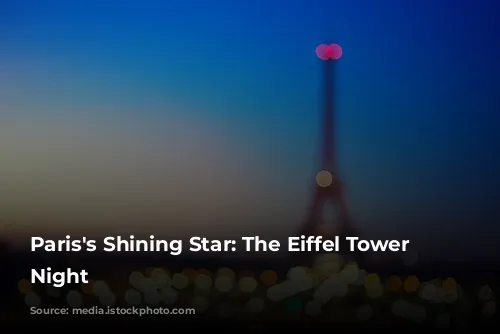
Nighttime Visits: A Unique Parisian Experience
Depending on the season, the Eiffel Tower remains open in the evening, offering visitors an exceptional glimpse into the magic of Paris after dark.
A Romantic Evening Ascend
As evening descends, the Eiffel Tower takes on a new dimension, enhanced by the warm glow of its golden lights. Visitors can enjoy a nighttime ascent similar to a daytime visit, but we recommend taking the stairs for a truly unique experience. The illuminated structure creates an intimate and enchanting atmosphere.
For an unforgettable end to the day, ascend to the top floor and indulge in a glass of champagne at the champagne bar while taking in the sunset. For a romantic dinner with breathtaking Parisian views, reserve a table at Madame Brasserie on the first floor or at the Michelin-starred Jules Verne restaurant on the second floor.
Spotlighting the Sparkle
To fully appreciate the tower’s sparkling display during a nighttime visit, arrive early, after nightfall. For an immersive experience, head to the second floor, where the golden lights will surround you, and look upwards to admire the tower’s glittering spire.
A Bird’s-Eye View of Paris
For an incredible perspective of Paris at night or to witness the lighthouse in action, ascend to the top of the tower.
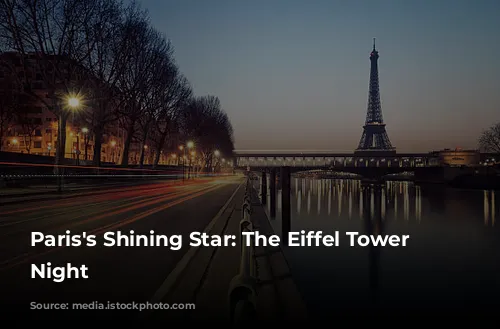
Capturing the Nighttime Magic
Want to preserve the memory of this enchanting evening near the golden glow of the Eiffel Tower? Feel free to capture this magical moment with photographs or videos. Sharing your memories on social media is encouraged.
However, the law differs for professional photographers. The golden lighting and sparkles are protected by copyright, and using the tower’s image requires authorization. Contact the Société d’Exploitation de la Tour Eiffel for permission.
Visiting the Eiffel Tower during the day or at night offers distinct experiences. At dusk, the monument’s golden lights transform the visit into a magical and unforgettable adventure.

